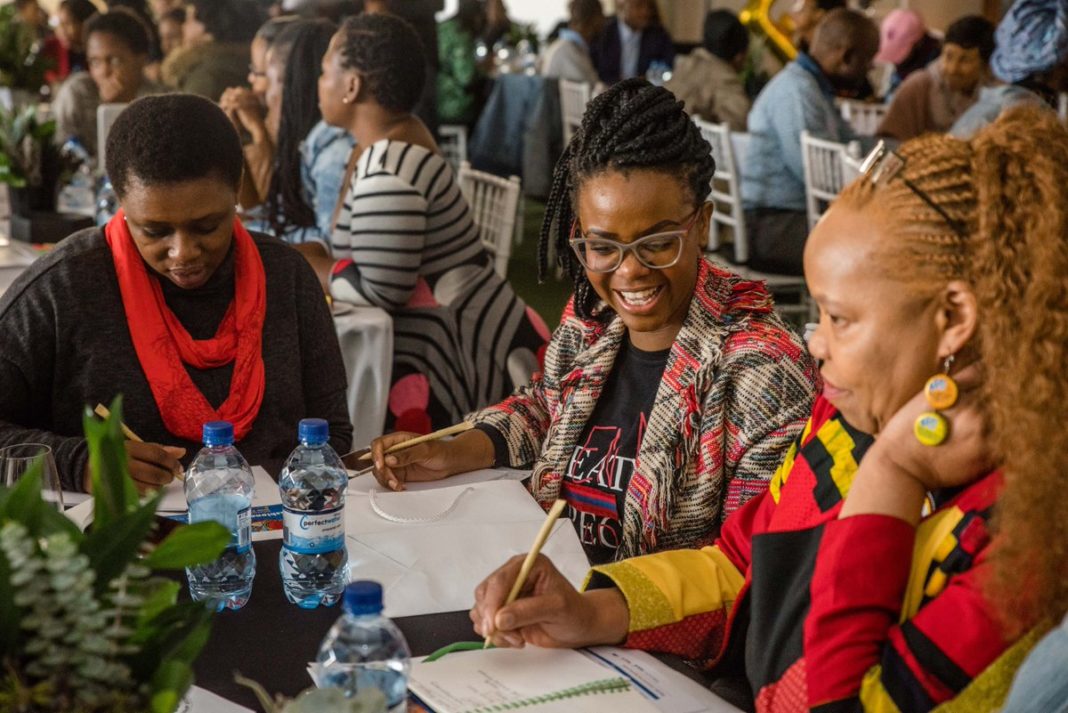The third Fashionomics Africa Masterclass for textile, apparel and accessories entrepreneurs, tomorrow’s designers and startups over the weekend met in South Africa in a workshop organised by the African Development Bank (ADB) in partnership with Google Digital Skills for Africa, Nesta, Parsons School of Fashion and African Fashion International.
The class provided the tools and know-how to build a fashion brand from an idea to its execution. Nearly two-thirds of the 170 participants were women. Experts and industry insiders gave presentations and took questions on how to run a business, digital marketing, branding, online commerce, high-quality manufacturing and networking.
Presenters included South Africa’s Department of Trade and Industry; South Africa’s Department of Small Business Development; the UK-based global innovation foundation, Nesta; Google Digital Skills for Africa; Parsons School of Fashion and SiMODiSA, a Johannesburg-based industry association whose mission is to accelerate entrepreneurship by collaborating with policy makers.
Organizers carried out a needs assessment survey for sector entrepreneurs and promoted and enhanced content for the online platform. Stronger public and private stakeholder strategic partnerships included a new collaboration on knowledge sharing between New York-based Parsons School of Fashion and the African Development Bank
“With Fashionomics Africa, the Bank and its partners are looking at this sector through a value chain approach from cotton production to retail stores to see how a “Made in Africa” brand, can contribute to our economies,” said Vanessa Moungar, Director of the Bank’s Gender Women and Civil Society Department. She added, “Given the right investment and access to training and resources, African textile, apparel and accessories entrepreneurs can compete on the regional and global stage, we believe.”
Stefan Muller, the Bank’s Lead Country Coordinator in South Africa pointed out, “Our institution has been undertaking initiatives to create an enabling environment for youth employment and entrepreneurship, including the Jobs for Youth in Africa Strategy, which is designed to create 25 million jobs and positively impact about 50 million youth over the next decade. We know that manufacturing, services and agriculture hold the greatest potential to create these much-needed jobs. But we also need to look at emerging sectors and opportunities arising from new activities and economies.”
Director Moungar concluded, saying, “This is the right time to support these fashion and textile sectors that yield not only economic benefits but also contribute to the development of our shared cultural identities. We must showcase positive perceptions of African traditions internationally. Together we will demonstrate that Africa is not just a source for labor, it is a source of creativity and innovation. It is time to scale up Africa’s creative entrepreneurial talent, ensuring equal access to opportunities for women and men.”
Fashionomics Africa supports African textiles and fashion by building the capacities of micro, small and medium-sized enterprises in the textile and clothing sector, especially women and youth. It is aligned with the Bank’s High 5 strategic priorities, especially Industrialize Africa, Improve the lives of African people, and the Jobs for Youth in Africa strategy.





